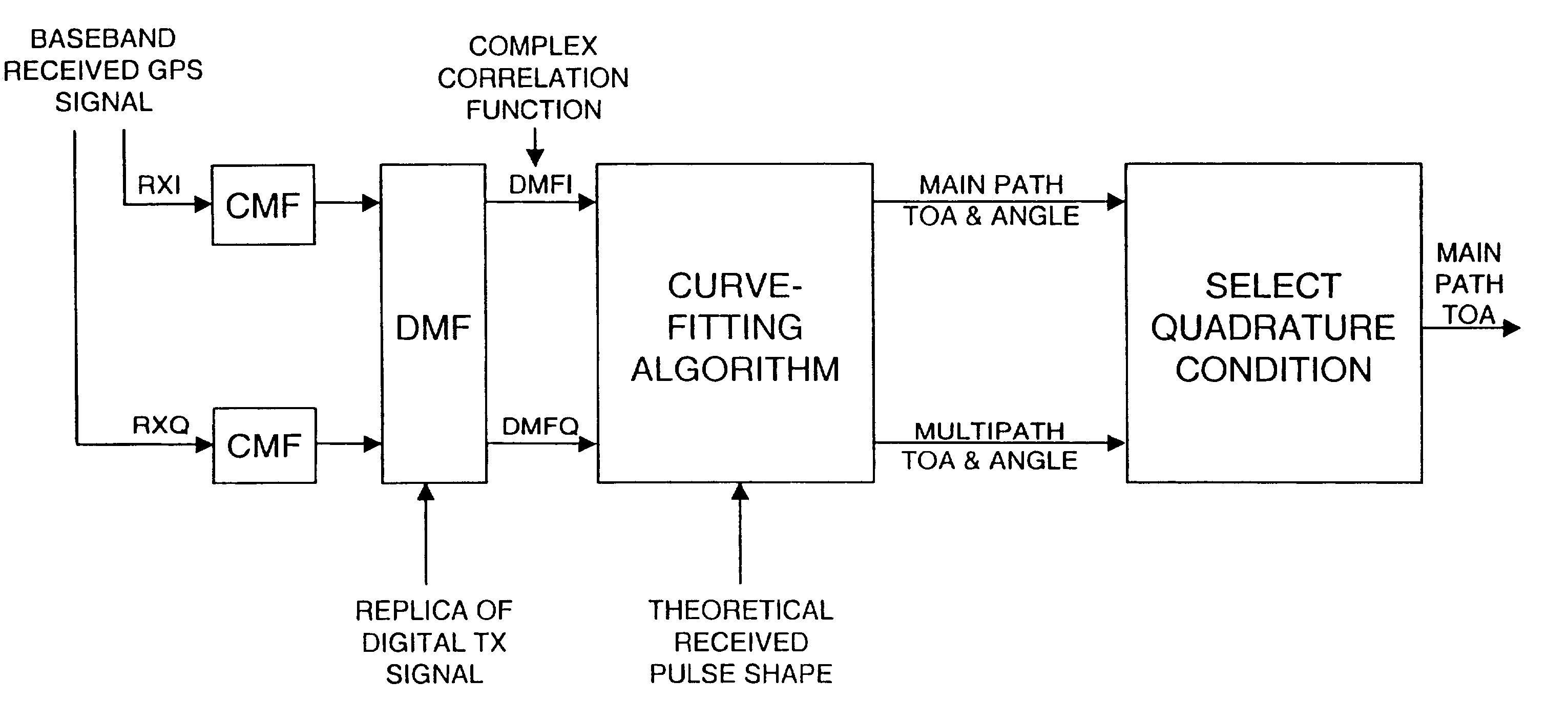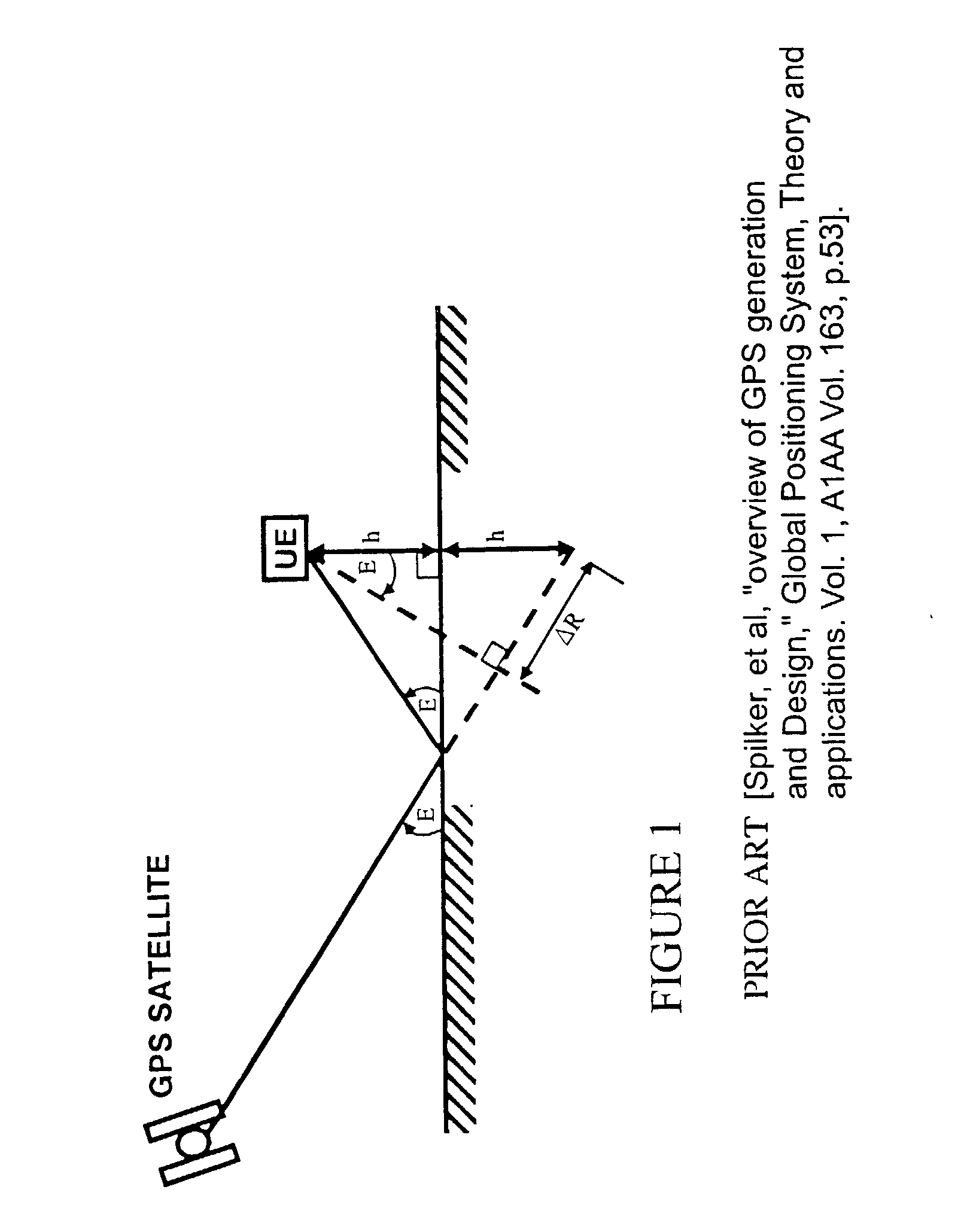Quadrature multi-frequency ranging (QMFR) applied to GPS multipath mitigation
a multi-frequency ranging and quadratic polarization technology, applied in the field of satellite communications, can solve the problems of multi-path problem between gps satellites and user equipment, require long time constants, and use much shorter time constants for mobile users, so as to improve the toa estimation accuracy of a gps receiver, minimize the impact of any delayed multi-path signals, and improve the effect of toa estimation accuracy
- Summary
- Abstract
- Description
- Claims
- Application Information
AI Technical Summary
Benefits of technology
Problems solved by technology
Method used
Image
Examples
Embodiment Construction
[0027] As shown in FIG. 9, the TOA estimate is degraded by interference of delayed multipath signals with the correlation peak due to the undelayed main path signal, shown in FIG. 9. This is particularly true for multipath signals that are delayed by less than 1.5 times the chip duration. Receivers other than the present invention, such as the narrow correlator, MEDLL, and leading edge curve fitting embodiments, do not improve performance as well as the present invention. Even when the above mentioned curve fitting on the leading edge of the received signal is used as a correlation function, the influence of a close-in multipath component is still severely degrading as to the TOA estimates. The narrow correlator and MEDLL techniques, although they significantly improve performance against multipath, still do not take advantage of the quadrature condition, as described below. Moreover, to extend the narrow correlator technique to work for P(Y)-code and M-code would require a large ba...
PUM
 Login to View More
Login to View More Abstract
Description
Claims
Application Information
 Login to View More
Login to View More - R&D
- Intellectual Property
- Life Sciences
- Materials
- Tech Scout
- Unparalleled Data Quality
- Higher Quality Content
- 60% Fewer Hallucinations
Browse by: Latest US Patents, China's latest patents, Technical Efficacy Thesaurus, Application Domain, Technology Topic, Popular Technical Reports.
© 2025 PatSnap. All rights reserved.Legal|Privacy policy|Modern Slavery Act Transparency Statement|Sitemap|About US| Contact US: help@patsnap.com



